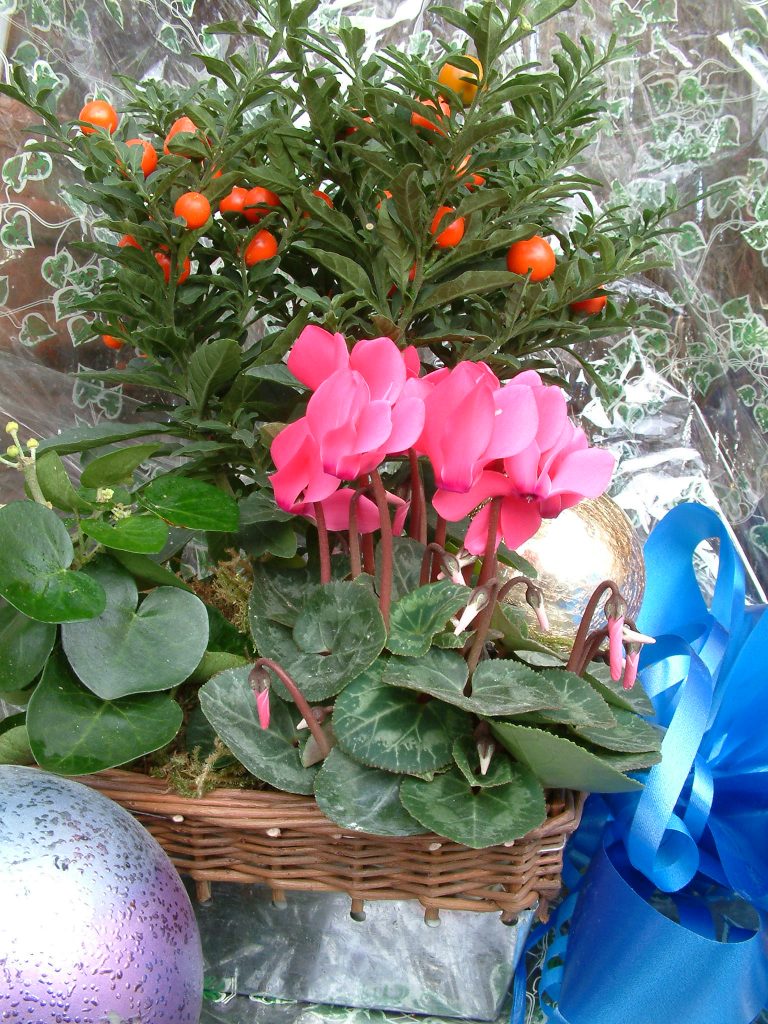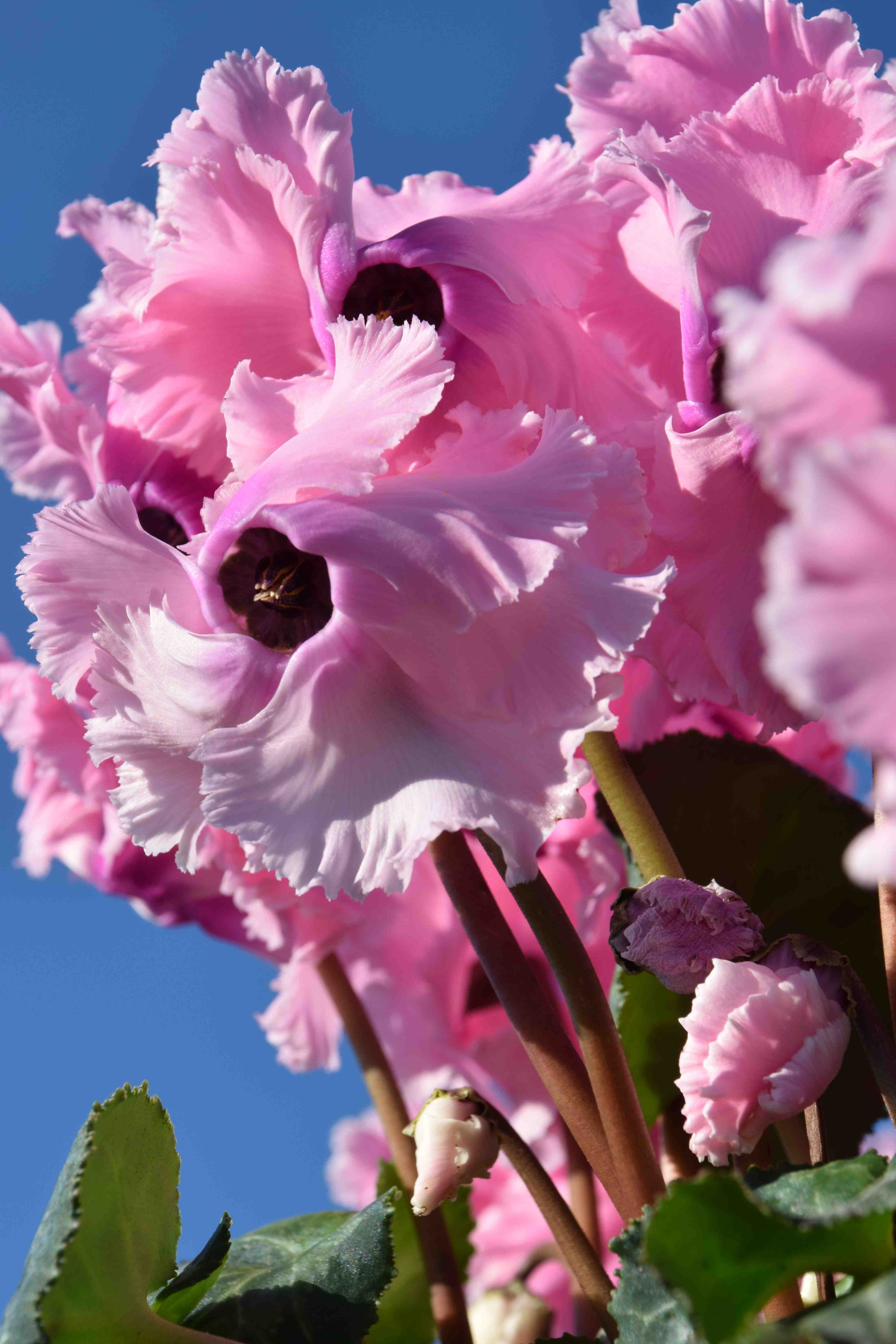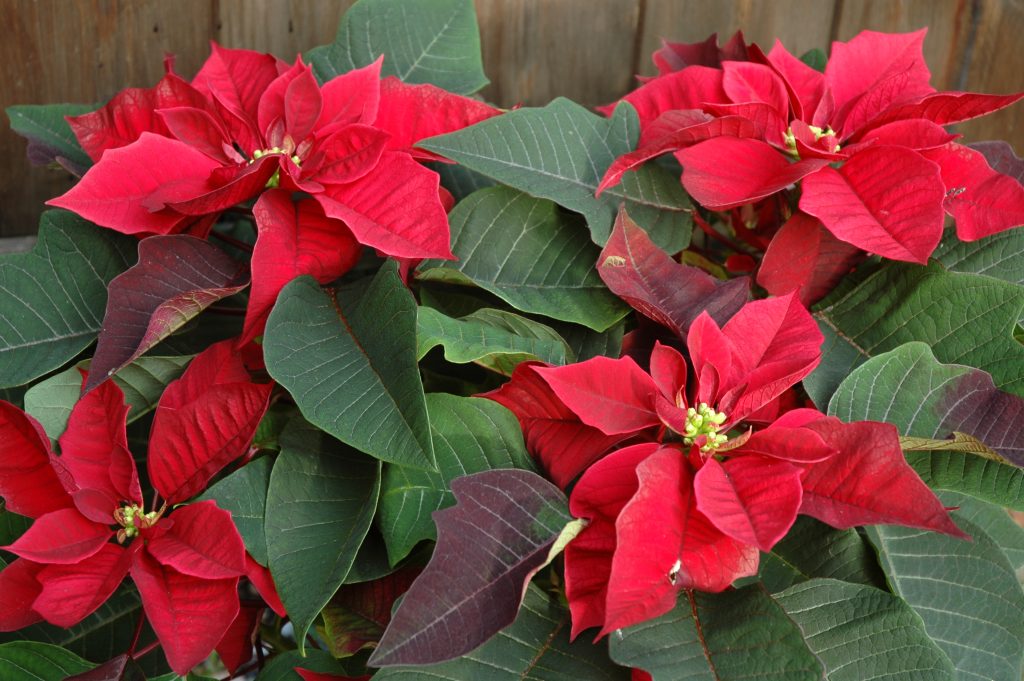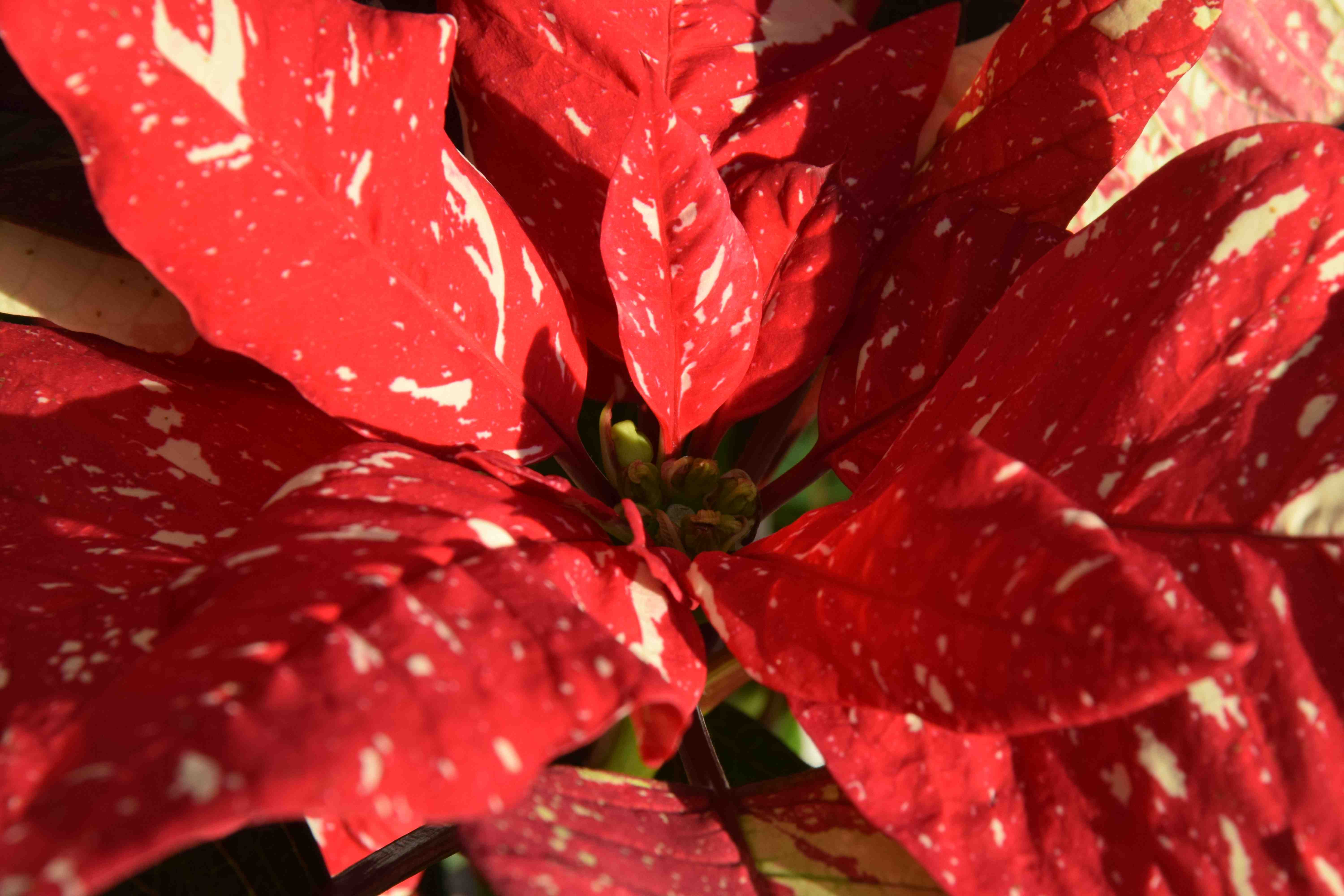
Cyclamen
I have a great fondness for cyclamen. Apart from being colourful and elegant, they remind me of my grandparents who always had one in the bitterly cold front room in the bay window, seen by no one but passers by. Their plant was probably decades old, kept in a lean-to greenhouse in summer when it was dormant and brought into the bright, cool spot for winter.
This is the standard life-cycle of a cyclamen, which seems a bit odd to us but our Christmas cyclamen is bred from the wild Cyclamen persicum, from the Middle East where summers are too hot for plants to grow and winters are wetter and cool. Over the centuries this lovely plant has been developed as a flowering pot plant.
When I worked at Nags Hall in the ’80s Brian Knight was very proud of his cyclamen which were grown in the greenhouses, taking their place after the summer bedding plants were sold. They were grown ‘cool’ so they were sturdy and he always proved this standing them upside down on their leaves (before they flowered). Cool and bright are the keywords with keeping cyclamen healthy.

Buying
When you buy a cyclamen, don’t worry about lots of flowers open. Look under the leaves to check for more buds. The leaves should be healthy and firm, dark green – though often marbled with silver – and the plant should be heavy if it is moist. But don’t panic if it is a bit dry – cyclamen withstand dry compost very well.
Never buy a cyclamen in a plastic sleeve. They hate stagnant air and dampness and will go mouldy. Check the plant under the leaves for signs of mouldy leaves. This may not be serious but it can be if the plants have been crowded on the staging and water has been splashed all over them.

How to keep
Cyclamen love cool conditions. The mini-cyclamen sold for patio pots can be kept indoors but all love to see the world outside so are perfect for windowsills. If kept too dry and warm the leaves will go yellow and the new flowers, as they open, will be pale in colour.
Remove faded flowers by grasping them and twisting the stem and giving a sharp tug. If you just cut them off, the base of the stem will rot and it can spread to other stems. The same applies to the leaves as they yellow.
The old rule about only watering from below has some merit. If you get water among the leaf bases it can cause rot. So tip some water into the pot holder and tip away any excess after an hour, when the plant has soaked up as much as it needs. It is FAR better to let a cyclamen dry out slightly, even to the point of just starting to wilt, before watering. If it stands in water for days it will die.
Modern cyclamen do not always have a summer rest like they used to. But after flowering – which can last many months – give less water in summer to force a rest. You can then repot in autumn when the tuber starts to push out new leaves and there is no reason why your cyclamen can’t live for many years. And unlike some plants, it will get better and bigger every year.
Poinsettia

Every year I think I won’t buy a poinsettia: I like cyclamen much more. But I can guarantee that by Christmas Eve I will have bought one traditional, red poinsettia and at least one in pink, cream or variegated, for contrast. Just like Brussels sprouts, Christmas just isn’t complete without a poinsettia.
When I worked at Nags Hall I used to write the houseplant care leaflets and if I can find one in my boxes in the loft I will try to show one next week. I well remember the first, Christmas leaflet and the story of why we enjoy poinsettias at Christmas.
Poinsettias are native to Mexico. As early as 1480, Aztec King Monetzuma was decorating his palace with poinsettias. But it is after the Conquistadors arrived with Christianity in the 17th century that most of our legends about the poinsettia originated. It is popularly called ‘La flor de Nochebuena’ – flower of the Holy night, and is associated with the ‘Dia de la Virgen’ or Virgin’s day on Dec 12th. In fact today is National Poinsettia Day – in the USA.
Poinsettias (Euphorbia pulcherrima) were discovered by Joel Poinsett in 1828 – so you can guess where the common name came from!
Buying

Poinsettias are potentially large shrubs but are grown from cuttings, rooted in summer, so they bloom as compact plants. Poinsettias like good light but also warmth. They hate chills so never buy one that has been standing outside. They are often sold in plastic sleeves and that is fine but just check for dead leaves in the base – and don’t buy if there are many yellow leaves.
The red bracts are not the actual flowers – they are small and yellow in the centre. Choose plants with lots of buds and if there are small scars where the flowers have already dropped the plants are not as fresh. However, the bracts can potentially last six months so a lot of the success is down to you!
But avoid buying plants that are sitting in trays of water or are bone dry. It is best to buy British-grown plants because they will have had a shorter journey from the nursery.
Once home
Place your poinsettia in a warm, bright spot. Do not put them against radiators or other sources of heat. Keep them out of draughts. They should be allowed to almost dry out between waterings. If they stand in a cold puddle they will start to drop leaves. Water with tepid water if possible. There is no need to feed at this time of year.
Poinsettias are not poisonous. Although eating a lot of a plant will cause a stomach ache they offer no greater risk to people and animals than other houseplants. But, obviously, take sensible precautions.
Many people want to know how to get their poinsettia in bloom a second time. Poinsettias are ‘short-day’ plants and only bloom when daylight hours are short and nights are long – like chrysanthemums. If you keep them in your living room they may not bloom the second year because of the artificial light at night. But it is possible to keep your plant and get it to rebloom. You can visit my personal blog here to find out how.